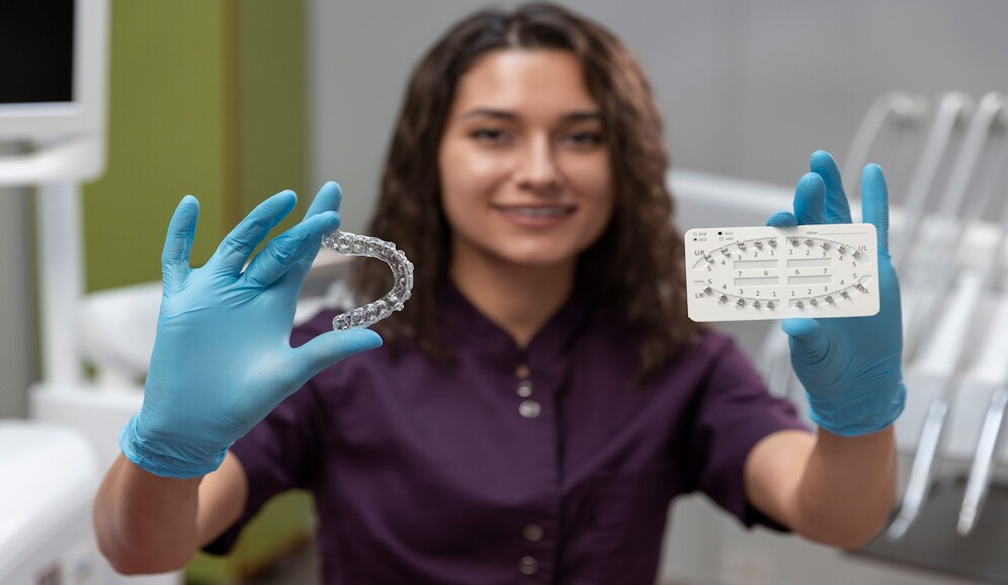Invisalign: How it Works and What to Expect

In our continued exploration of modern dental technology, we turn our focus to one of the most innovative developments in orthodontics—Invisalign. This article aims to decode the mechanisms behind Invisalign, highlighting its benefits and providing you with a comprehensive guide on what to expect during the treatment. Whether you are considering Invisalign for yourself or simply eager to learn about this technology, let's dive into the intricacies of how Invisalign is revolutionizing dental care.
What is Invisalign?
Invisalign is a cutting-edge orthodontic device that corrects teeth alignment without the conspicuous wires and brackets associated with traditional braces. Composed of a series of custom-made, clear plastic aligners, Invisalign offers a virtually invisible method to enhance your smile. The aligners are meticulously crafted using advanced 3D computer-imaging technology, ensuring a tailored fit and effective adjustment of teeth over time.
How Does Invisalign Work?
The Invisalign system operates through a sequence of aligners, each designed to make incremental adjustments to the position of your teeth. The process begins with a digital scan of your teeth, from which a detailed treatment plan is developed. This plan predicts the movements necessary to achieve the desired alignment and generates the series of aligners needed. Typically, each aligner is worn for about two weeks before moving on to the next in the series, gently guiding your teeth into their correct positions.
The Benefits of Invisalign
A. Aesthetics
One of the most appealing aspects of Invisalign is its aesthetic transparency. The clear aligners are almost imperceptible, making them an excellent choice for adults and teenagers who are concerned about the appearance of traditional braces. With Invisalign, patients can maintain their natural smile while undergoing orthodontic treatment, boosting confidence and social engagement.
B. Comfort
Unlike conventional braces with metal components that can irritate the mouth, Invisalign's smooth plastic aligners offer a comfortable experience. Each aligner is custom-fitted to snugly cover the teeth, minimizing discomfort. The absence of sharp edges or protruding parts means that Invisalign wearers can avoid the typical abrasions associated with metal braces.
C. Convenience
Invisalign aligners are removable, providing an unparalleled convenience not available with traditional braces. This means that eating, brushing, and flossing can be performed without the interference of fixed orthodontic appliances. Additionally, there are no dietary restrictions, so patients can continue to enjoy their favorite foods during treatment.
D. Overall Oral Health Benefits
Invisalign promotes better oral hygiene than traditional braces. Since the aligners can be removed, thorough cleaning of the teeth and gums is easier to achieve, reducing the risk of plaque build-up, tooth decay, and gum disease. Additionally, aligning teeth properly can also help alleviate issues caused by improper bites, such as jaw pain and wear on tooth enamel.
What to Expect During Your Treatment
A. Initial Discomfort and Adjusting Period
Like any orthodontic treatment, Invisalign may cause initial discomfort as your teeth begin to move. You might experience some pressure and minor soreness for a few days after wearing a new aligner. However, this discomfort typically subsides as your mouth adjusts to the new aligner. Remember, it's a part of the journey to achieving your perfect smile.
B. Lifestyle Changes (Eating, Cleaning)
Adopting Invisalign entails some lifestyle adjustments, particularly in your eating habits and oral hygiene routine. Since the aligners should be removed before eating, it's essential to plan meals and snacks to avoid wearing them less than the recommended 20-22 hours per day. Additionally, maintaining optimal oral hygiene by brushing and rinsing after meals before reinserting the aligners is crucial.
C. Duration of the Treatment
The duration of Invisalign treatment varies depending on the complexity of the case but generally ranges from 12 to 18 months. Consistent wear of the aligners is critical to staying on track for the expected treatment duration. Your dentist will provide a customized timeline based on your specific dental needs.
D. Regular Dental Appointments
Throughout your Invisalign treatment, regular appointments with your dentist are necessary to monitor progress and make adjustments to the treatment plan as needed. These check-ups are typically scheduled every four to six weeks. During these visits, your dentist can provide you with the next sets of aligners and address any concerns you might have.
Conclusion
Invisalign offers a modern, efficient, and discreet solution for correcting dental alignment issues. Its customisable nature, combined with the aesthetic and health benefits, makes it a superior choice for many patients. As with any medical treatment, a successful outcome requires commitment to the prescribed regimen and regular professional oversight. If you're considering this innovative orthodontic solution, consult with a dental professional to discuss your specific needs and suitability for Invisalign treatment. Embrace the journey toward a healthier, straighter smile with confidence and well-informed expectations.
